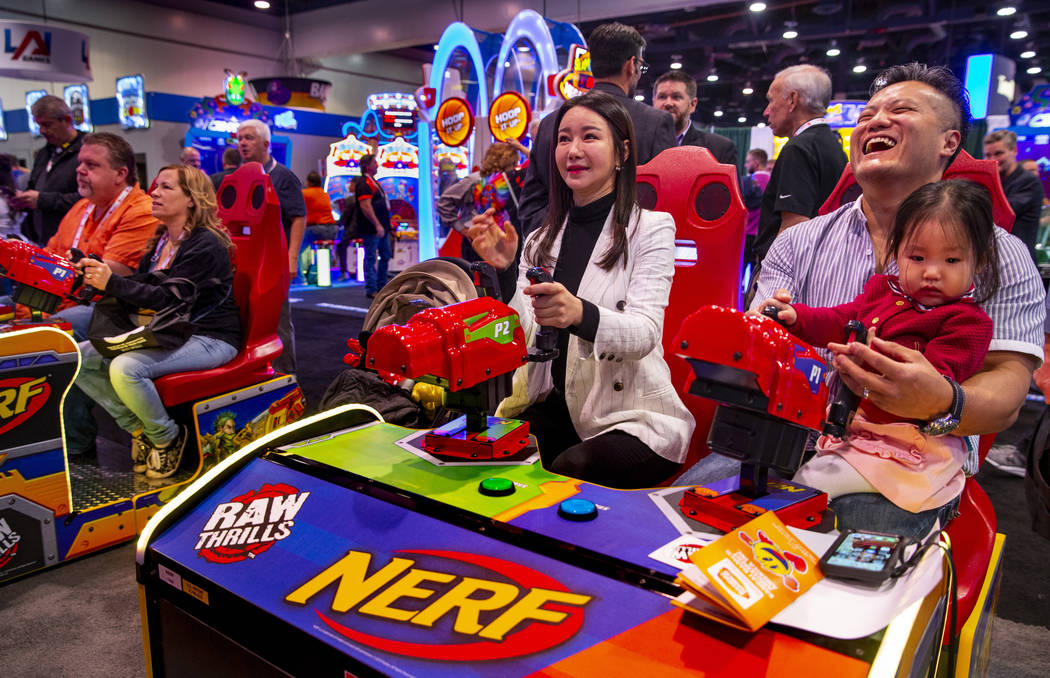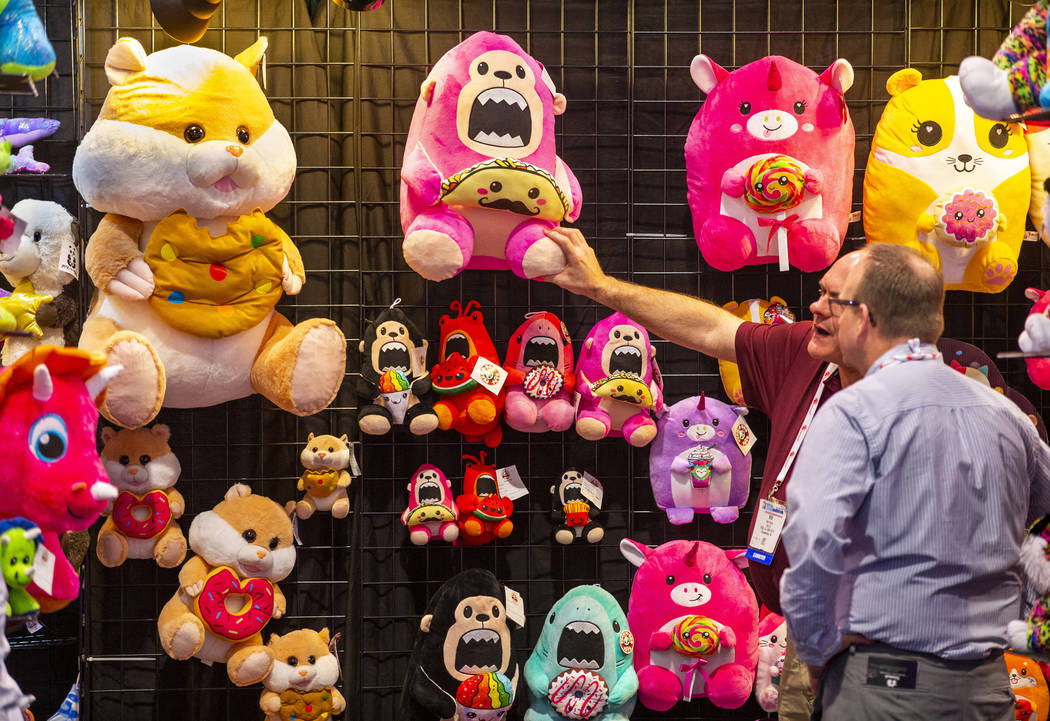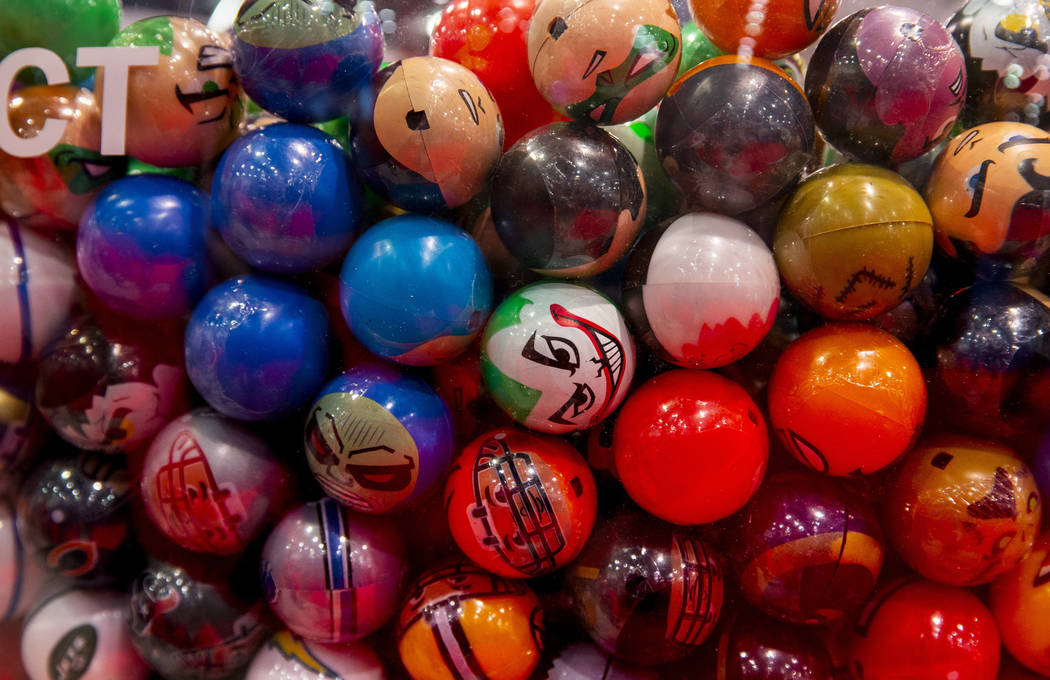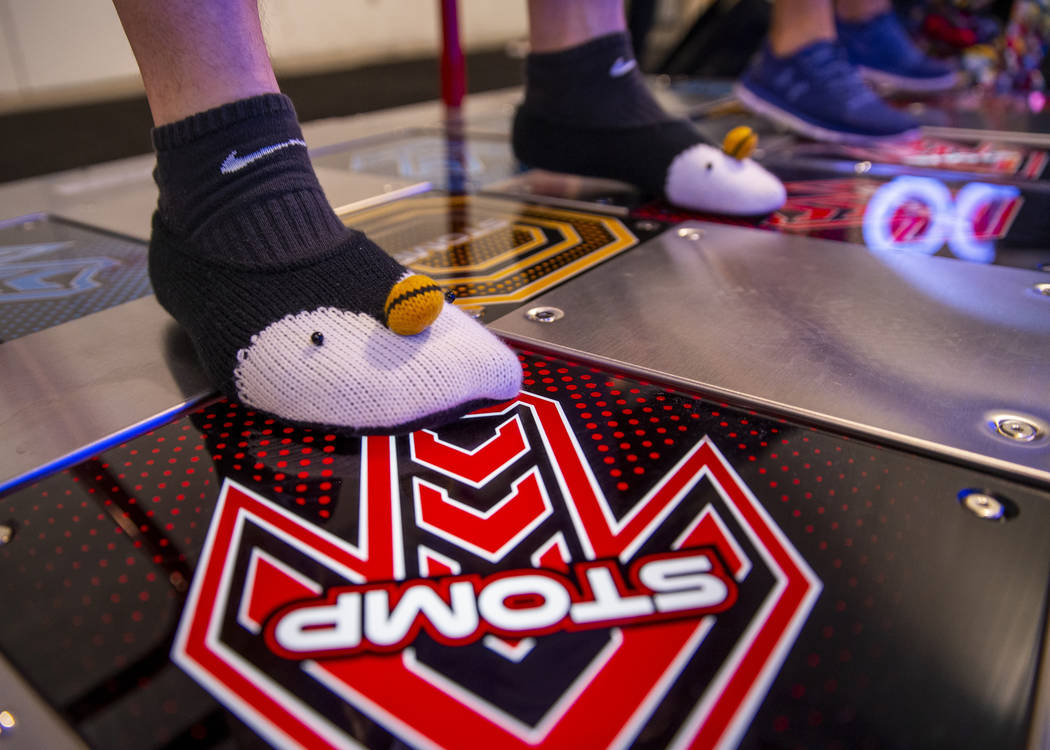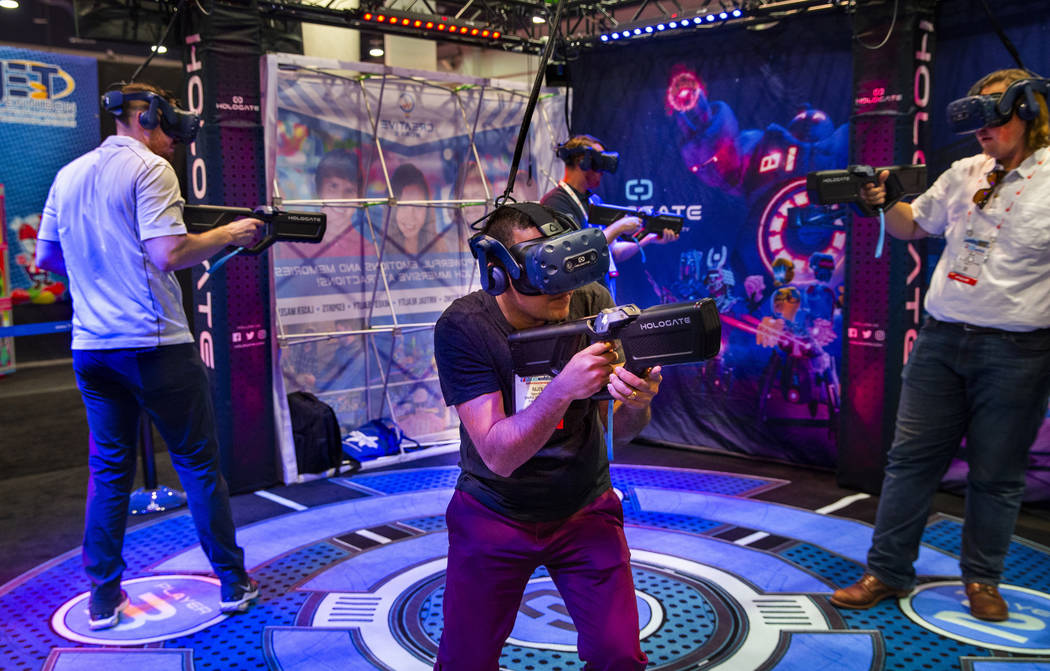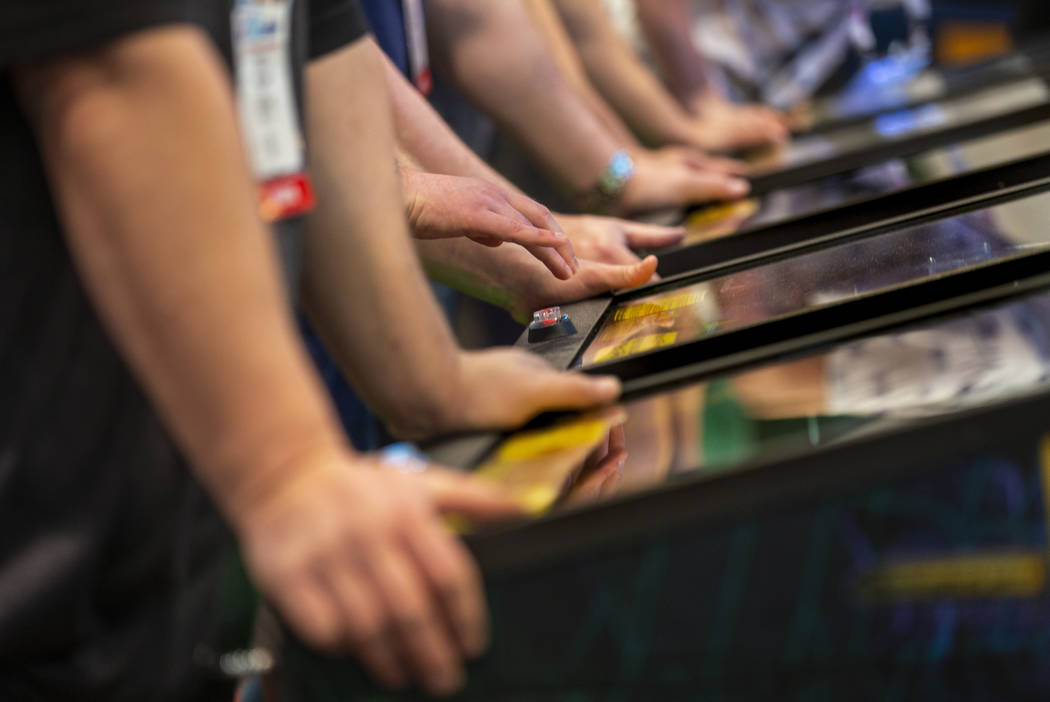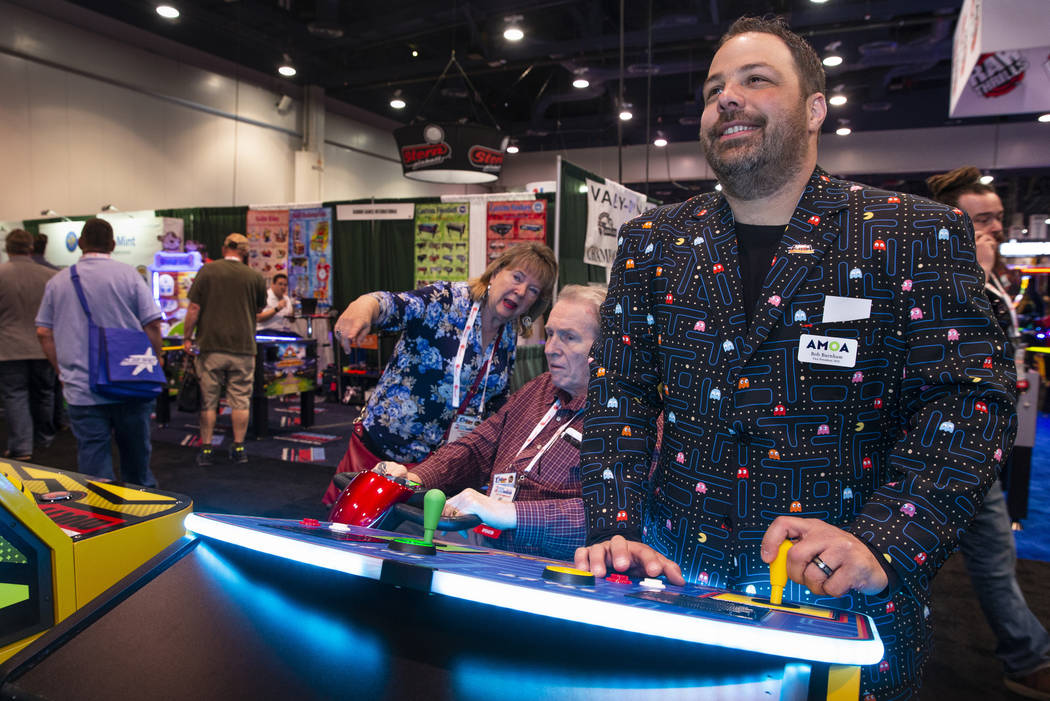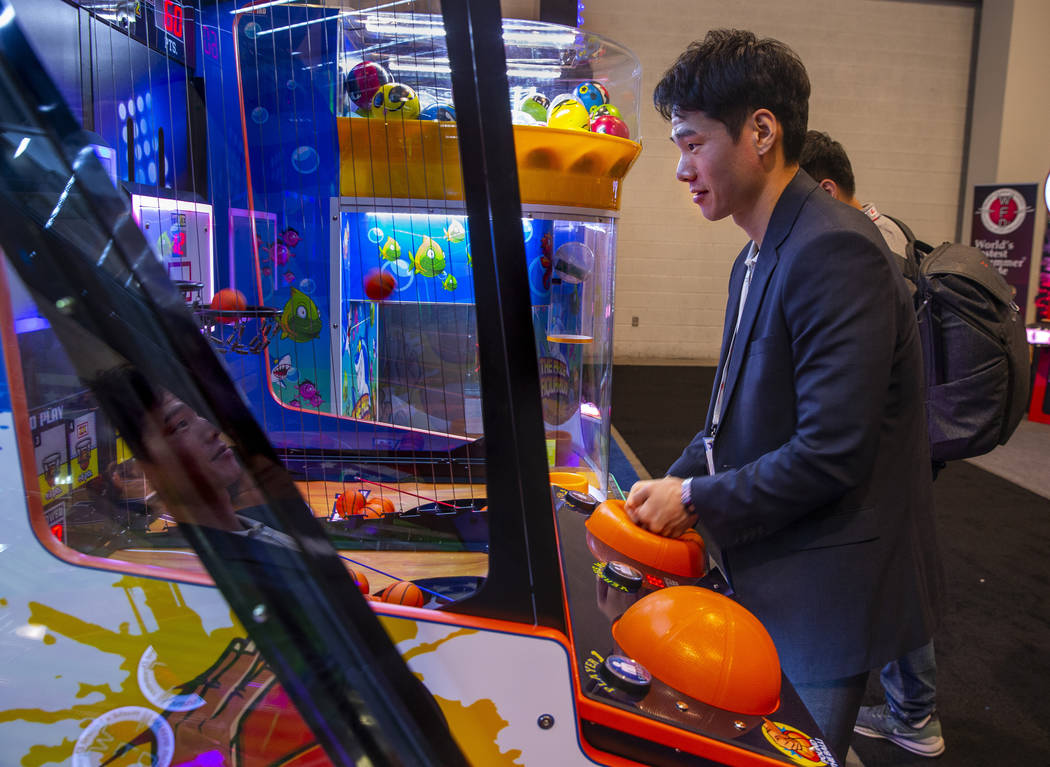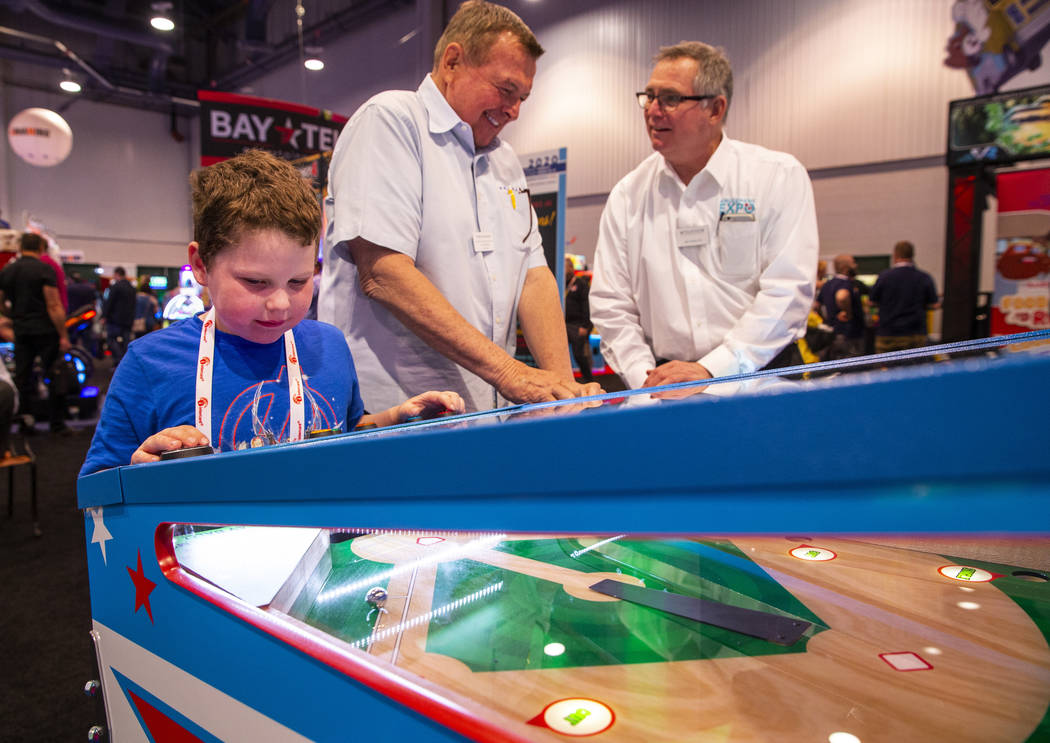Arcade businesses set for revival, industry insiders say
Tucked away on the first floor of downtown Las Vegas’ Neonopolis is the Fremont Arcade. The 2,500-square-foot space doesn’t give owner Larry Galbraith much to work with, so almost every inch is covered with claw machines, stuffed prizes and of course dozens of arcade games vying for attention with colorful, blinking lights.
Galbraith said he played many of the same games as a child, when the market for brick-and-mortar arcades was larger.
“It’s a much smaller industry,” he said. “It’s much more consolidated, and it requires a lot more investment.”
Many view arcades as a dying industry, especially when compared with their heyday in the 1980s. But industry experts believe that the market has a chance to be revitalized. Data from market research firm IBISWorld shows that the arcade, food and entertainment complexes in the U.S. have an annual growth rate of 3.3 percent and earned $2 billion in revenue last year.
Changes over time
According to Play Meter Magazine, there were just over 2,500 arcades in the country in 2015. It’s a far cry from the 24,000 facilities in 1981.
Peter Gustafson, executive vice president of the American Amusement Machine Association, said advancing technology in video game consoles and smartphones changed everything and gave consumers an excuse to play at home.
The association is one of the sponsors of the Amusement Expo International convention, which began Tuesday at the Westgate. Exhibits were held through Thursday at the Las Vegas Convention Center, and the Las Vegas Convention and Visitors Authority expected about 3,000 to attend.
“Going back to those early days, we introduced people to technology,” Gustafson said. “Tech was our greatest asset; it gave us enormous growth. But it was also our worst enemy.”
Gustafson believes that the industry is once again returning to a point where technology complements its business model.
Rohit Joshi, the owner of Neonopolis downtown, believes virtual reality’s immersive technology is the next big thing for the arcade industry.
“You’re going to feel as if you’re inside the games. … It’s something that gets all the senses excited,” he said. “People will come back (to arcades) because of VR.”
According to research firm Markets and Markets, the virtual reality market, valued at $8 billion last year, will grow to nearly $45 billion within the next five years.
Gustafson said VR gives gamers a fun opportunity they can’t find at home.
“We have the perfect venue for that technology to be introduced to the public,” he said. “It’s social. I think that’s one of the reasons it works in our space. … The integration of all these things under one roof gets people off the couch.”
New attractions
There may be fewer than 3,000 arcades in the U.S., but Play Meter Magazine found more than 166,700 locations that contain or operate arcade equipment.
Rohit said arcade machines can be found in bars, restaurants, museums and bowling alleys across America, providing another attraction and revenue source for business owners.
Bar-arcades are one tactic to draw in a gaming crowd with a diverse revenue model.
“If (arcade owners don’t offer) beer and wine, they’re missing huge crowds of people,” he said. “You’re probably looking at 20 to 30 percent in sales.”
Jonathan Borchetta, the co-owner of The Nerd, a downtown bar, said its arcade machines contribute to the facility’s atmosphere.
“It’s a paradigm shift where folks are putting (video games) into social atmospheres,” he said.
The Hi Scores bar arcades in Las Vegas don’t bother charging customers for arcade game use; Director of Operations Ali Razavi said the business makes up for revenue in alcohol and food sales.
The two Hi Scores bars, located in Henderson and Spring Valley, offer vintage games like “Ms. Pac-Man,” “Tetris” and “Street Fighter.” Razavi said the nostalgia from these games tends to draw in crowds, especially for customers of Generation X, those between the ages of 39 and 54.
“What sets the arcades apart is the whole adventure of going to a place and then finding this little gem that was popular 25, 30 years ago,” he said. “If you incorporate food and beer as part of your experience, you’re supporting the draw.”
But that sense of nostalgia comes at a price. Older arcade machines can be finicky and difficult to repair. Razavi said fixing a joystick alone can cost up to $100.
“Some are pushing 40 years old,” he said. “You need the right technician to come and fix it. … These machines break left and right.”
The upfront costs aren’t much better. Galbraith said he pays on average between $10,000 and $30,000 for a new machine for the Fremont Arcade, and the costly, all-immersive games that are trending now often fit only one player at a time.
“Every purchase is a risk,” he said. But “there is a demand for location-based entertainment, and the bigger the better.”
Even with high maintenance costs, Gustafson is optimistic about the industry’s future as younger generations mature.
“I think we’re perfectly positioned with millennials (those ages 23 to 38) and Gen-Zers (those ages 7 to 22) who are tired of stuff,” he said. “They want a shared experience; they want to do things. They don’t want stuff. They want to interact with people.”
Contact Bailey Schulz at bschulz@reviewjournal.com or 702-383-0233. Follow @bailey_schulz on Twitter.
Recession's effects
The industry isn't what it used to be 30 years ago, but Pete Gustafson, executive vice president of the American Amusement Machine Association, said he's seeing a shift as the recession's effects continue to dissipate.
When the Great Recession hit, Gustafson said even fewer families were looking to spend money on recreational activities like arcades. But it led to a number of brick-and-mortar retail companies going out of business, leaving open cheap real estate for arcades to take over.
"There's space to fill," he said. "We come in, and communities are really supportive of our industry. We're moving into space that's provided, we employ the local community and we're giving the community something to do. The recession benefited us to a certain degree."



